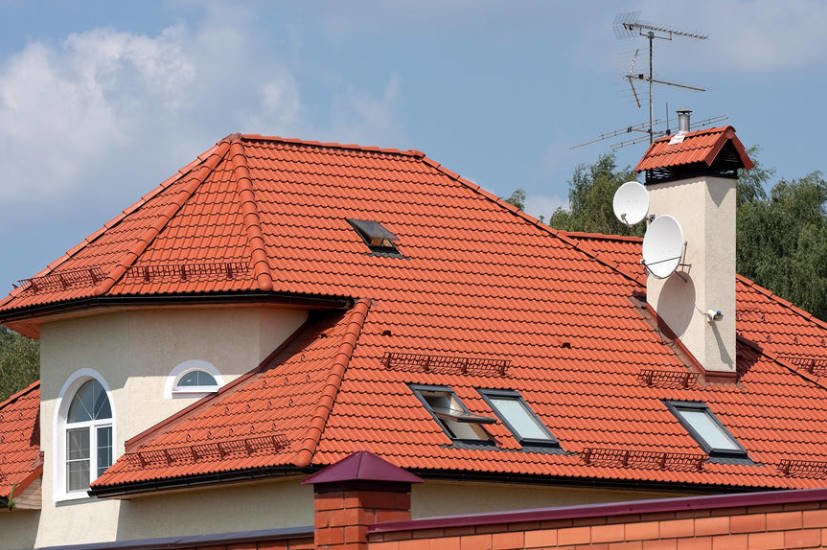
A house roof is like a hat for a lady. Being an indispensable part of the wardrobe and protection from rain, wind and heat, a fashionable hat at the same time adorns its owner, serves as a source of pride and admiration. And the initial attention is attracted to it. This analogy I would like to continue purely on the topic of the article: when we enter the territory of the horticultural Association, the first thing we see is the roof. Their silhouettes, as decorative elements of cottages, create a characteristic architectural appearance of buildings, play an important role in the ensemble of the holiday village.
The shape of the roof, the angles of the slopes, the schedule of chimneys and roofing accessories, the type and color of roofing material — all this creates a unique personality of the home. The house together with the roof reflects tastes, habits, if you want, perception of life, serves as a visiting card of its owner.

This tiled roof can be seen from afar
The choice of the scheme of the roof and the type of material for it is influenced by the climate, the surrounding landscape, architectural and building traditions of the area, finally, the family budget.

According to local residents, these facilities are a little less than two centuries
In this publication, we will consider in detail the natural tile.
What is a natural tile
Among the many types of roof coverings natural ceramic tiles-the undisputed leader. This led to the creation of numerous analogues that mimic it (mostly only the name).
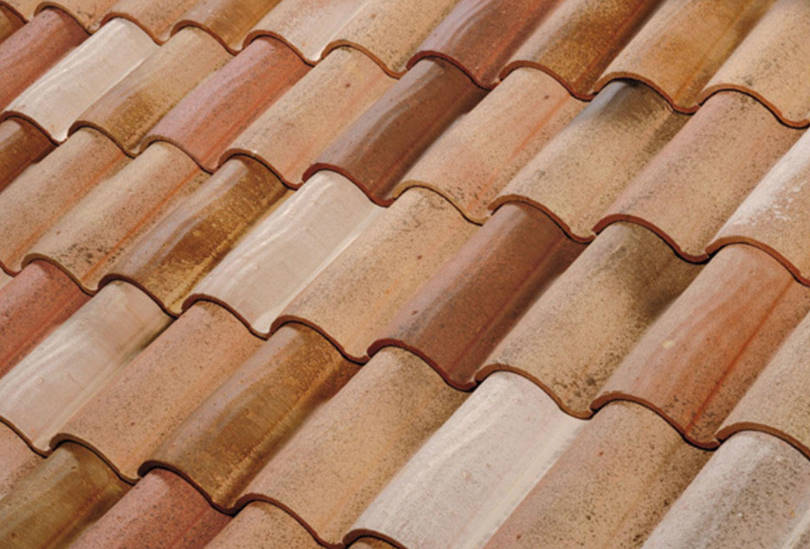
Ordinary roof tiles
In recent years, called tiles and metal stamped leaves, and small roofing tiles stilobatom. Roofing is usually chosen primarily at the stage of designing the house. After all, the choice of roofing material affects a lot in the future: the configuration of the roof, the angles of slope, drainage system — in short, the appearance of the house as a whole.
House with elegant tiled roof looks solid, creates a sense of confidence in the future, reliability, stability of the foundations.
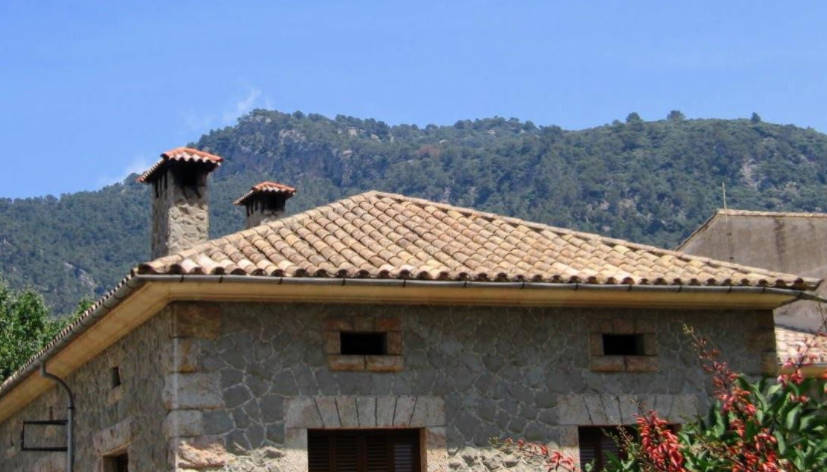
Amazing harmony between the color of the tile and the facing stone. All materials are natural
The term “natural tile” means two technological products:
- ceramic tile formed from clay;
- cement-sand (C/N) — from cement and sand.
Last fit to call concrete, and you will not be far from the truth. Both tiles-the next of kin. Can be said, sisters. Indeed, for both applied clay. For ceramic tiles use clay and additives, and for cement-sand — cement, sand and additives. Cement is a powdery burned mixture of clay and limestone. In materials science, fundamental materials science, there is an idea that cement is a special form of ceramics, because it is obtained by firing at high temperatures… in any case, both cement and ceramics belong to the class of silicate materials.
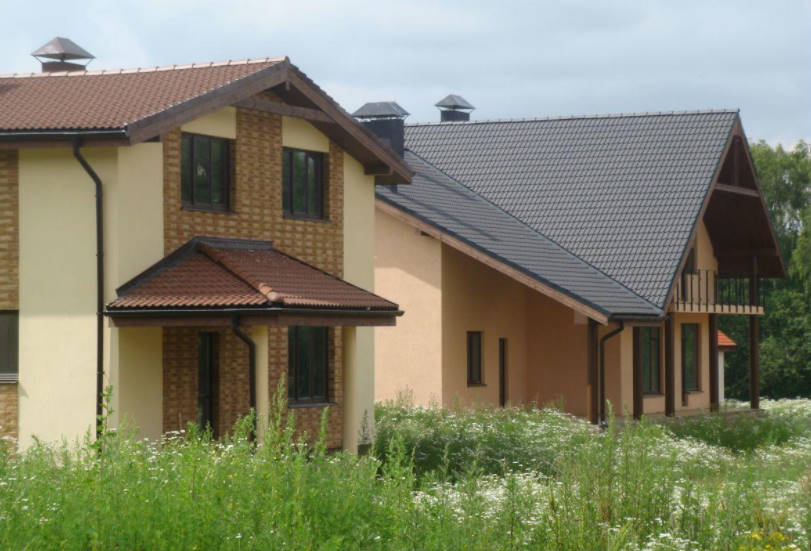
Cement-sand tile
Ceramic ware made from clay by firing at a temperature of 1000 °C, enjoyed the full confidence in man. Thousands of years they serve him a roof for homes and hearths, material for making utensils and ornaments. Pottery is deservedly considered healthy. As they say, environmentally friendly. And from the concrete made on the basis of the same natural raw materials the foundations and overlappings of houses habitual to us are made. Why do we doubt ecological purity, that is “natural” cement-sand tile of fine concrete?
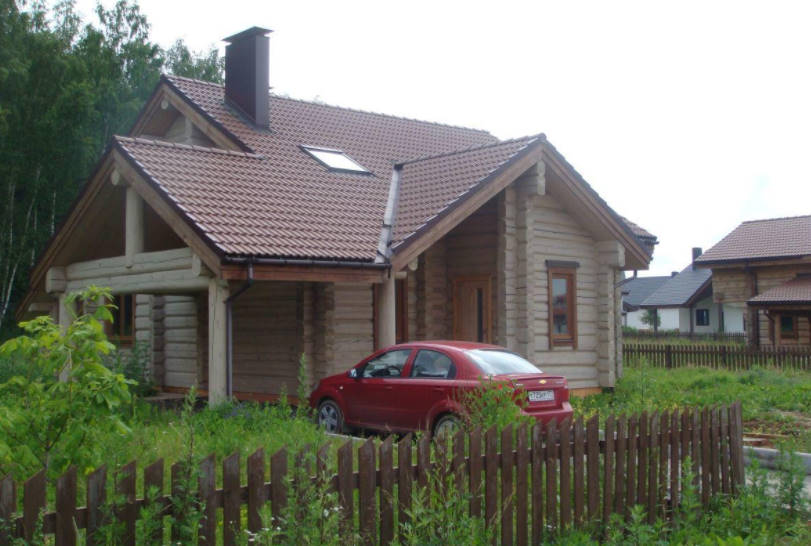
Cement-sand tile
Now tile is characterized by high frost resistance, and its durability exceeds the age-old bar.
The use of tiles
Tiles covered the roofs as a simple and the most complex forms: from one – to multi hipped, hipped, gable, etc. Possible roof slope for use of the roof from 10° to 90° for cement-sand and at least 22° for ceramic. These figures are quite suitable for snow-free geographical areas. However, if the snowfall is common for you, the roof will have to” lift up ” at least 37°. Here it is, a sensitive relationship between the project and the materials used.
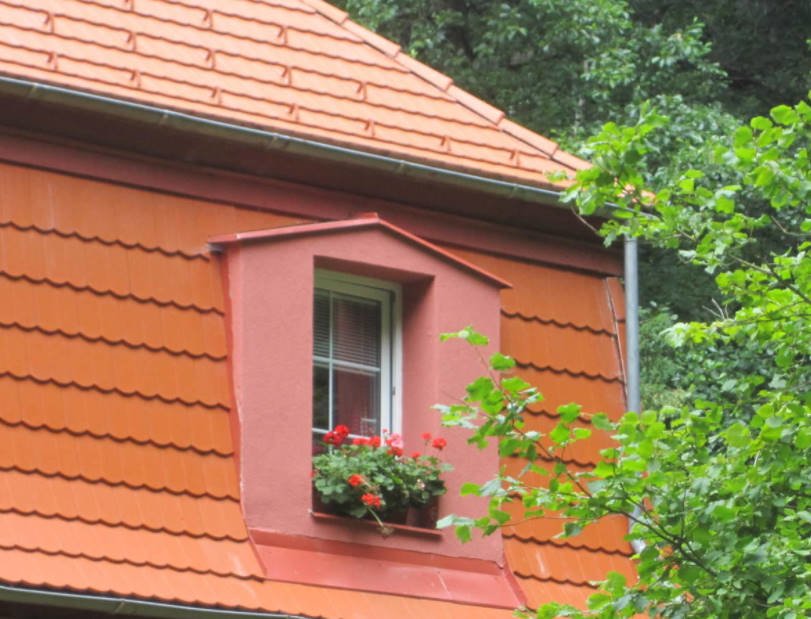
The use of tiles for facing vertical surfaces
So you have to think about the choice of tiles at the stage of preparation of the project. This was already mentioned at the beginning of the article, but this truth should be repeated.
Properties of natural tile
This material attracts primarily for its prestige. Behind these words are hidden:
- enviable durability (for ceramics-up to 150 years, for C / N-60 years );
- beauty;
- ecological compatibility;
- indifference to temperature changes;
- resistance to UV radiation, rain, wind, snow, etc.;
- high degree of noise absorption during rain;
- no need for operating costs;
- ceramics bypassed bacteria, mosses, etc.;
- it can be painted, covered with a variety of frosting;
- in addition to the classic color of modern tiles can have dozens of different colors;
- annealed and hardened clay becomes fire-proof until the end of time.
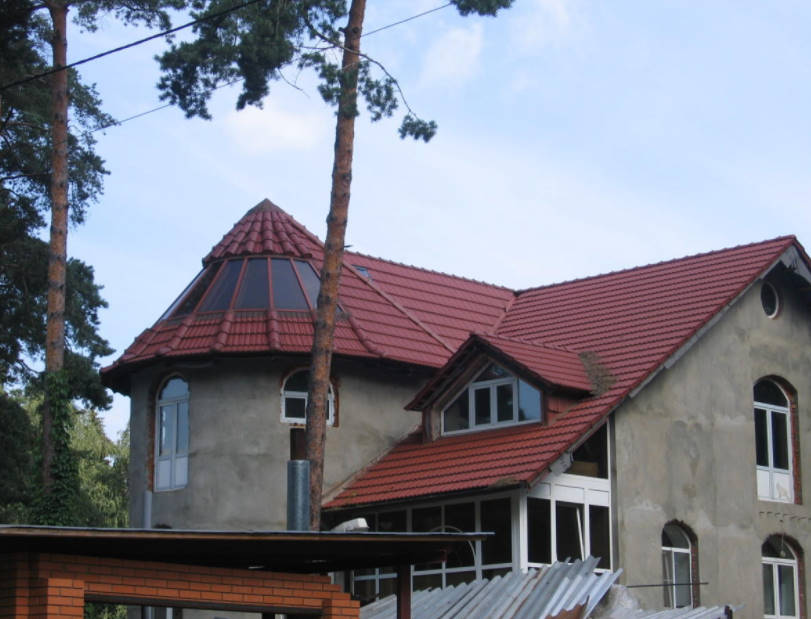
An exemplary embodiment of a tiled roof
However, the advantages always rely cons. The consumer should know them and evaluate the material on the basis of a set of characteristics. Deficiencies in the tiles a bit, but they are. It:
- a large mass, heavier roof structure;
- fragility that requires careful attitude to the material;
- the need to arrange the roof with a large slope;
- difficult roofs of complex shape;
Types of natural tiles
Years of development of the “tiled” trend led to the creation of three types:
- flat;
- pan;
- seam.
The simplest in production — a flat rectangular die, the open end of which is rounded in a circle equal to its width. This ” simplicity “got the running name”beaver tail”.
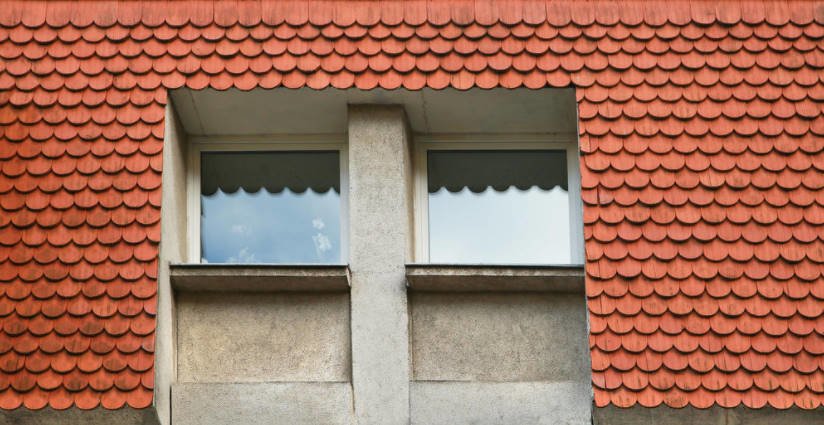
Tile “beaver tail”
Grooved tiles are made in two versions. The first-cone-shaped chute is slightly less than semicircle. And the second – “Dutch” S-shaped model, curved to the width of the shape with spikes.
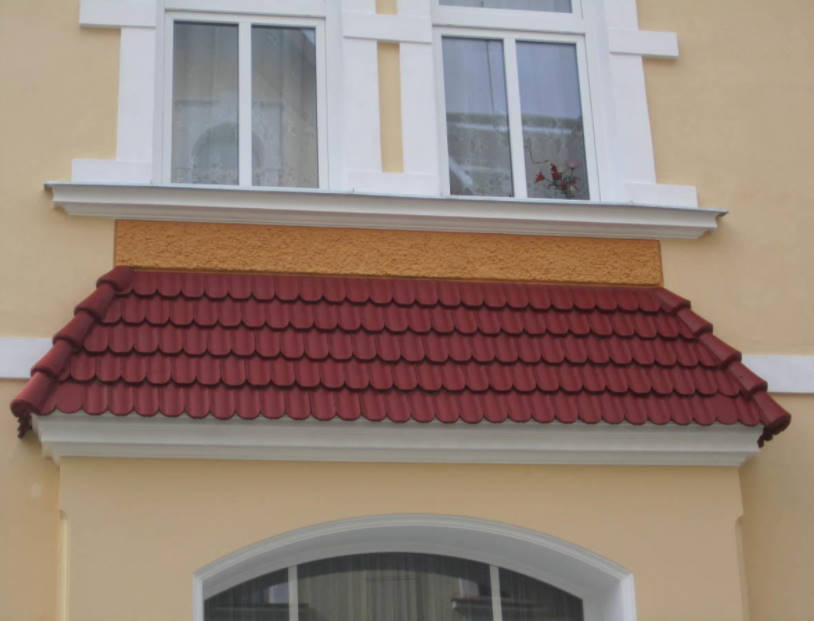
In this case, the facade apron tile is more decorative than functional
Flat and grooved tiles are used on slopes with a slope of at least 40° and stacked with a large overlap in height and width of the coating to the roof “did not cry.”
In received now the greatest distribution of standing seam tile on the side or all four sides provided by the grooves and protrusions for a tight connection of the tiles with each other (seam). Thanks to these design tricks from interlocking tiles the highest coefficient of opacity. This is the Marseille, Frankfurt, Dutch types of tiles and their modifications.
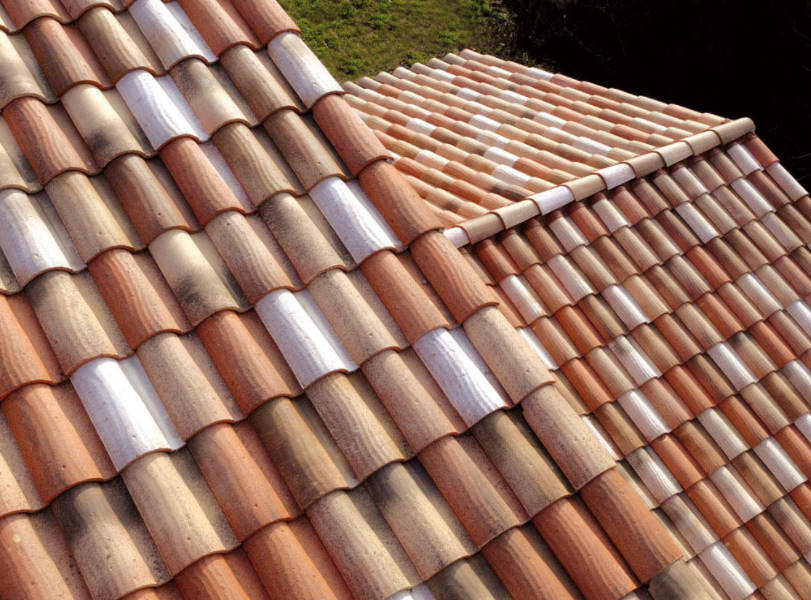
Version of the Frankfurt tiles
Construction of a tile roof
The roof consists of a supporting truss structure and a complex system of enclosing roofing. Under the roof is a warm attic or unheated attic. As rafters, tile roofs are used:
- logs,
- beam,
- solid between themselves thick boards (not less than 50 mm),
powerful of the laminated structure.
On top of the roof beams is placed crate.
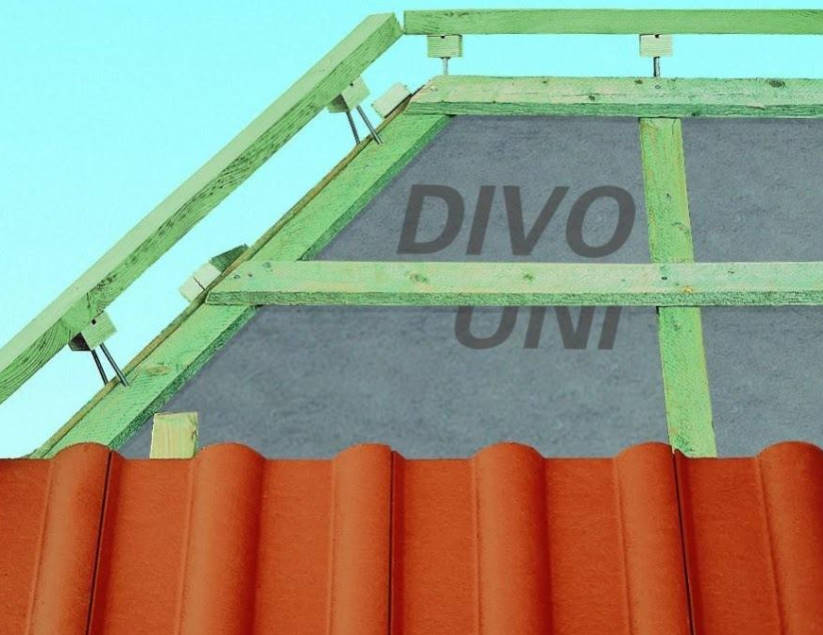
Attaching the ridge cap and sheathing shingles
To protect the house from heat in summer or frost in winter, the roofs need to insulate, or rather – to insulate. How best to do that? In houses with not heated attics where in the winter only dry (to be exact, freeze out) washed linen and hold brooms for a bath, a heater stack not on a roof under a roof, and between a ceiling of the top warm floor and a floor of a cold attic. This is more economical, since the floor space is less area pitched roof, and more convenient.
If you are going to build a warm attic, the work will be much more difficult. In this case heat-insulating material stack between rafters, and its thickness is limited by width of rafters, i.e. very small. Therefore, it is necessary to use the most effective thermal insulation materials.
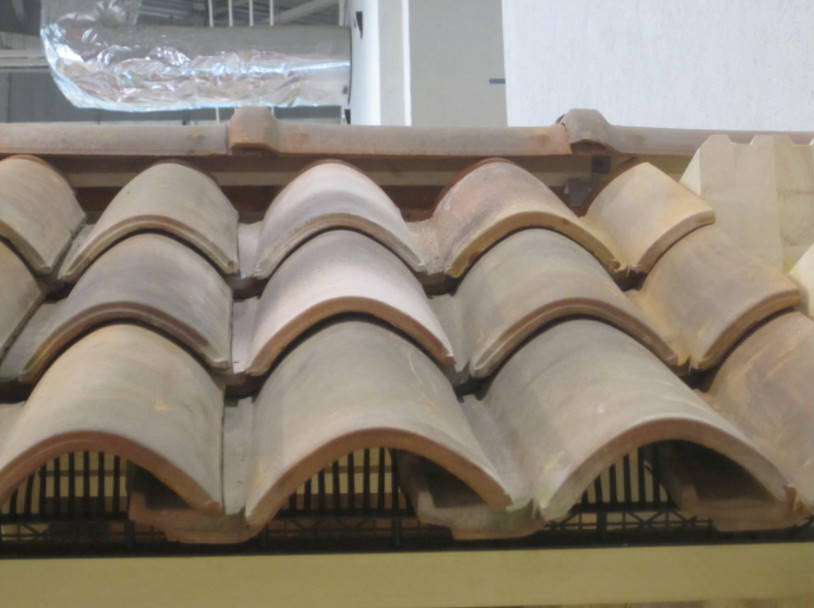
Laying of an ordinary tile
The process of building a tiled roof consists of 5 main stages:
- Checking the flatness of the roof slope;
- The layout of the rows of crates. For this often use a template or coloring cord.
- Lifting tiles from the ground level to the roof.
- Directly laying tile dies. It leads from the bottom up, from right to left. For fixing on a crate at the majority of types of dies the special thorn thanks to which they cling to a crate is provided. Groove dies in addition cling to each other, forming a continuous carpet.
- On “problem” spots (under the ridge, on the overhang, near the Gables) dies are additionally fixed with screws.
The concept of “roof tiles” refers to a complex of building products, which, in addition to ordinary tiles, and includes the necessary associated elements. And the more complex the roof, the longer the list the last.
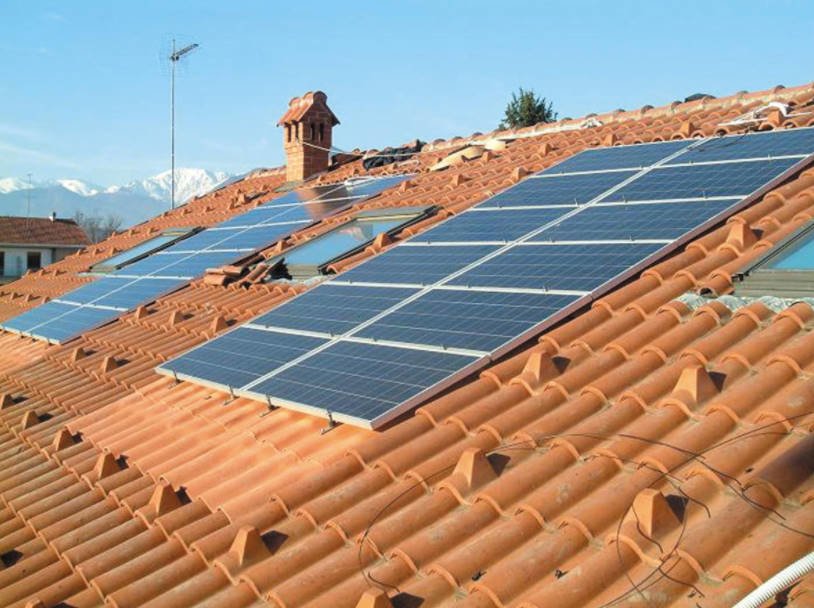
Increasingly tile gives a share of the roof to install solar panels
Now the tile is again back in fashion with new variations on a classic theme. The beauty, perfection and natural elegance of the lines make it one of the most common roofing materials in the world. If a new wave of classic style will entice you, natural tiles will present your strict mansion or a cozy romantic Chalet in a favorable light. Good luck!


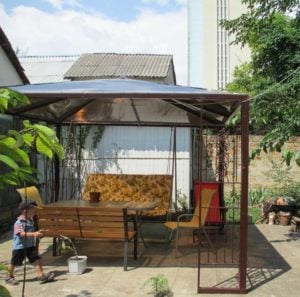

Leave a Reply